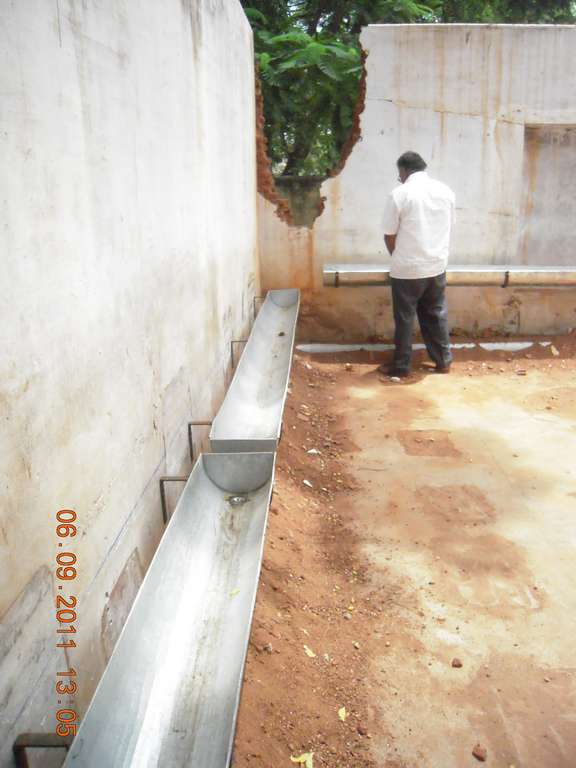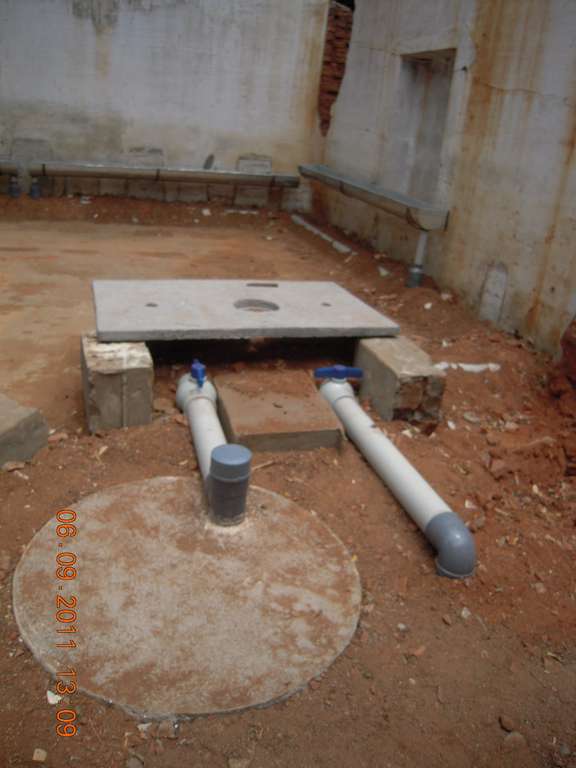Guest post by: SCOPE
Forwarded to the Portal by: Ramesh Sakthivel
SCOPE Trichy had under the UNICEF–IIT Delhi project, set up a pilot urinal facility in Musiri Boys High School, Trichy District, Tamil Nadu to utilise urine in agriculture.
Provision of inadequate number of urinals in the toilets constructed in schools often leads to the development of unhygienic conditions. As a result, toilets created in most of the schools across the country are not being used and as a result most of them are in a state of disuse.
According to the norms, every 20 children must be provided. However, this norm is not being strictly followed due to lack of sufficient financial allocation for toilet construction in schools. Conventional toilets built incorporating this norm would require very high financial allocations.
Considering these factors, under the UNICEF – IIT Delhi project being implemented by SCOPE, Trichy, a pilot urinal facility has been implemented in Musiri Boys High School, Trichy District, Tamilnadu. The facility is being used by 1200 boys of the Schools and the urine collected is being used for fertilising agricultural crops and recovery of struvite (Magnesium Ammonium Phosphate) for use as fertiliser. Under the project, a struvite recovery pilot plant is being installed at SCOPE Research Centre in Musiri, Trichy district, Tamilnadu.
In the school, as plans for construction of a permanent toilet facility is being worked out, 6 GI curved troughs of each 10 feet long, 9 inches wide and 6 inches deep have been mounted on the school compound wall  . These troughs are connected to a PVC collection pipe which diverts urine to a urine collection tank. The facility enables collection of 150-200 litres of urine. The system has been installed at a low cost of Rs. 25,000.
. These troughs are connected to a PVC collection pipe which diverts urine to a urine collection tank. The facility enables collection of 150-200 litres of urine. The system has been installed at a low cost of Rs. 25,000. 
In the similar lines, a permanent urinal facility can be created for boys in schools by fabricating FRP / stainless steel troughs which can be mounted on the compound walls of schools. The height of the trough on the wall side can be extended by a foot for protecting the walls and offering convenience to the users. Also, separators over the trough can be fabricated at every 450-600 mm spacing to offer privacy.
The facility can be converted into a waterless system by providing 6–9 inches long flexible rubber tubes slit at the bottom to the outlet pipes of the troughs. The flexible rubber tubes fitted to the troughs can effectively prevent odour emanating from the pipeline and urine collection tank. A light roof cover over the facility and green cover promoted in the area can provide ambient conditions for the children. It is expected that a facility incorporating these amenities would only cost in the range of Rs.1 to 2 lakhs based on the choice of material.
This design is expected to reduce the cost of urinals being built for boys in schools while providing excellent facility for them to urinate. By promoting this design, adequate urinal facility can be provided at a very low-cost.